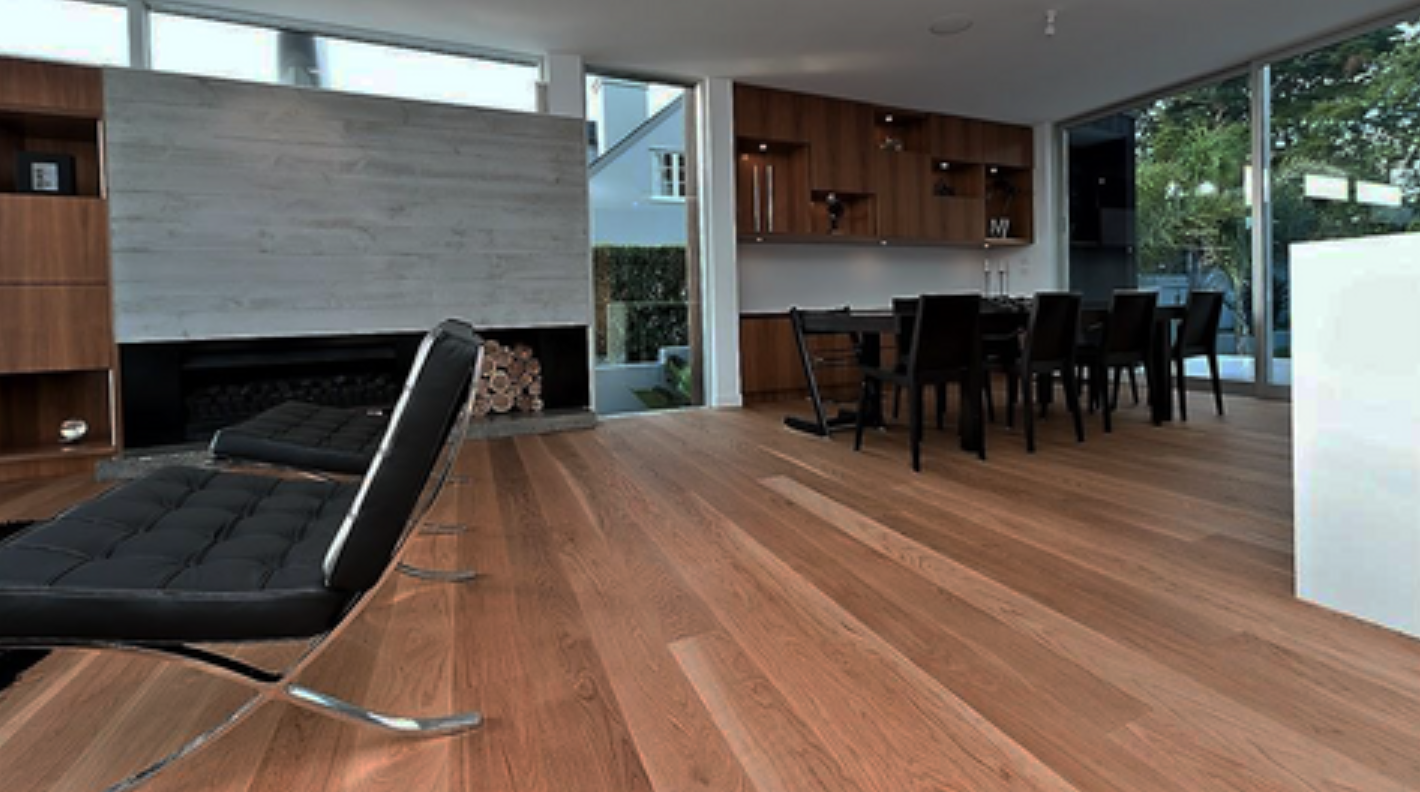How Much Does Timber Flooring Cost?

There are three types of timber flooring on the market today, its key to get an understanding of these and the way they are installed prior to getting to the best flooring choice for you. These are;
- Solid timber,
- Engineered timber
- Laminate timber
All About Solid Timber Flooring
Solid Timber is exactly as it sounds, this is timber that is milled from trees, kiln dried and machined into a tongue and groove profile ready for flooring.
Solid timber comes in different thicknesses ranging from 9mm to 19mm and a wide variety of widths from 80mm to 220mm and more. This flooring option is the traditional way flooring was made for 100’s of years. Solid timber flooring can be installed over joists, timber subfloors such as ply or particle board, and concrete using surface or secret nailing, and glue-down installation methods. Solid timber is milled from whole logs which allows for beautiful long length of boards up to 4 or 5 metres long. Once installed, solid timber needs to be sanded flat and coated with a product such as oil or polyurethane to seal and protect it.
Solid timber is susceptible to changes in moisture content and cupping, shrinkage and cracking can be signs of change in moisture content caused by the atmospheric conditions in which it is installed. Well cared for and installed correctly, solid timber will last a lifetime.
Engineered Timber
Engineered timber is flooring that is made of a top layer of timber bonded to a plywood backing. The plywood backing stabilises the top layer creating a very stable, durable timber floor that is much less likely to shrink or cup. Another key benefit of engineered timber is that it only uses 2-6 mm of valuable decorative timber top layer per board, making better use of slow growing timbers.
What Affects Engineered Timber Flooring Costs?
Over the past decade, engineered timber has grown in popularity to take large share of the timber flooring market today. Engineered timber comes in widths from 150mm up to as wide 450mm, this is made possible with the added stability of the plywood backing. Engineered timber plank lengths are more standardised with lengths of 1900mm and 2200mm being common. Today, most engineered timber flooring is pre-finished in the manufacturers factory to a wide variety of shades and colours, this means installation is much quicker as no on-site sanding and polishing is required. Some engineered flooring comes with a ‘click lock’ jointing which allows the product to be installed ‘floating’ over a thin layer underlay, however, most engineered timber flooring comes in a tongue and groove profile for glue-down installation.
Laminate Timber Flooring
‘Laminate’ timber flooring is made of high-density fibre (HDF) board with a textured top layer made from melamine material. The surface is essentially a photo of a timber plank printed and embossed onto the top. Laminate timber flooring has become popular because of its durability and resistance to wear and tear, it is installed floating which makes it a low cost and durable flooring option. Laminate timber flooring comes in a variety of lengths and widths from 1200mm to 1800 mm and is typically 9mm thick.
Installation Methods
In today’s construction environment, timber flooring is typically installed over a timber sheet flooring such as ply or particle board, or concrete. Solid Timber flooring and some engineered flooring can be installed over joists; however this practice is less used these days.
Glue Down Installation
Glue down installation involves using a strong adhesive to bond the flooring to the substrate, A good timber flooring glue, such as Selley’s Direct Stick is applied to the subfloor with a notched trowel and the timber is then installed on top and weighted or secret nailed while the glue cures. Another common method using a ‘sausage gun’ to apply glue to the back of the board which is then installed. Selley’s, Bona and Mapei all make good quality flooring adhesives for this method. Glue down installation creates a strong bond resulting in a quiet, solid underfoot feel and a permanent floor.
Floating Floor Installation
Floating floors are laid on a thin layer of foam underlay and the board come with a locking tongue and groove profile often called ‘clock lock’ or ‘Uniclic’ which ensure the board don’t pull apart. This method is very quick and requires less skill to install which is why it is often offered as a DIY option. A floating floor will move slightly underfoot and can be a noisier flooring option than glue down installation.
Preparation Required
For all timber flooring types, subfloor integrity and levelness are of prime importance to a successful installation. Timber subfloors require sanding to level joins and clean off construction debris or other contaminant that could prevent a good glue bond. Concrete subfloors require grinding to level and remove any curing agents or chemicals used the concrete placing process, and then sealed using a vapour barrier to prevent excess transmission of moisture into the timber flooring. These sealers a usually two-part epoxy product such as Selley’s VBS, or similar.
Timber Flooring Price Guide
Timber Flooring is usually sold and installed by the square metre and the pricing can be divided into product cost, preparation, installation and sanding and finishing, if required.
Solid Timber pricing ranges from $300 m2 installed, sanded and finished, to $500/m2 and more depending on the timber species, profile and grade.
Engineered Flooring ranges from $285/m2 to $500/m2 depending on the brand, product dimensions and finish
Laminate Timber pricing ranges from less than $100/m2 through to $200/m2 or more installed floating depending on product quality.
Final pricing will depend on a site visit from the installer, amount of preparation required for successful installation of product, and your location.
